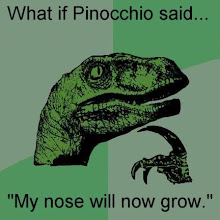In an auction at Sotheby’s France yesterday there were many paleontological specimens for sale but the highlight was an Allosaurus that was supposed to fetch around €800,000–1 million ($1.09-1.36 million). That is a lot of money, and in fact it ended up getting more than that according to some sources €1,296,750 ($1,805,743.73).
A BBC report said this.
Found in Wyoming in the US, the 33-ft long skeleton is the most complete of its species, with 70% of its bones.
This of course brings up the question of if this is good paleontology (
you can probably guess how I feel) which gets good coverage in the BBC article.
"I see so many things being lost to commercial dealers, who sell them on to rich buyers," says Dr [Darren] Naish.
"We have so much trouble finding money for research of any kind. But then there seems to be people with limitless money to buy for their private collection.
"They are used as if they are expensive pieces of art," he says.
[...]
Prof Kevin Padian, a palaeontologist and curator from the University of California in Berkeley, says the "problem is that it robs us of our patrimony".
"Not every specimen is priceless in scientific or educational terms, but who should make this decision - auctioneers?"
In general, he says: "There's no guarantee that the skeleton you're buying is correctly identified, you don't know what has been restored or reconstructed (often from very different animals).
"So they are not good investments, except in the minds of other people who want to impress their friends."
But Dr [David] Martill disagrees, saying he does not believe scientists have "some God-given right" to fossils.
Both sides bring up good arguments and overall the BBC article does a good job not favoring either side.
This article by ArtInfo.com shows that many people just view them as pieces of art.
Although institutions are a natural market for such an enormous object, Mickeler said that “for several years now in France you have important collectors who actually have the space to put such items in their home, not just natural history collectors but also modern and contemporary art collectors.” The dinosaur, he added, is “perfectly suited for a contemporary interior.” According to the specialist, “there has been demand, a real interest” since the sale was announced, with certain French entrepreneurs indicating that they may be interested in acquiring the dinosaur to give or loan it to a museum.
They also go on to mention what else is being sold.
Other top dinosaur lots in tomorrow's sale include the skeleton of a Plesiosaurus, a 190-million-year-old aquatic reptile that is one of the most complete specimens in existence (est. €320-370,000, or $436-504,000), and a rare fossil of a Dorygnathus, a flying reptile that resembles a Pterodactyl (est. €162-200,000, or $221-272,000). Geological marvels are also featured, including a citrine crystal nicknamed “The Magic Flower,” and a large tourmaline crystal on a base of white albite (each est. €320-350,000 or $436-477,000).
But if mammals are your thing, don’t despair: also galloping onto the auction block are a complete woolly rhinoceros skeleton from Pleistocene-era Siberia (est. €70-90,000, or $95-123,000) and a European cave bear displayed in a setting of moss and tree trunks, a relative bargain at €20-25,000 ($27-34,000).
Argh, they say other animals in the dinosaur lot and then don't list a dinosaur must..resist...urge...to...rant...about...how...this...shows...we...need...more...education.

No comments:
Post a Comment